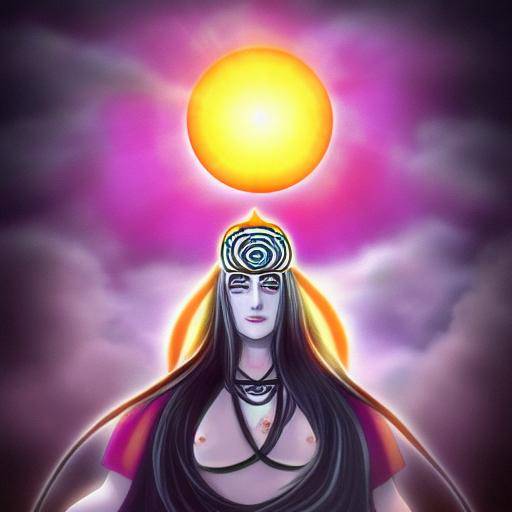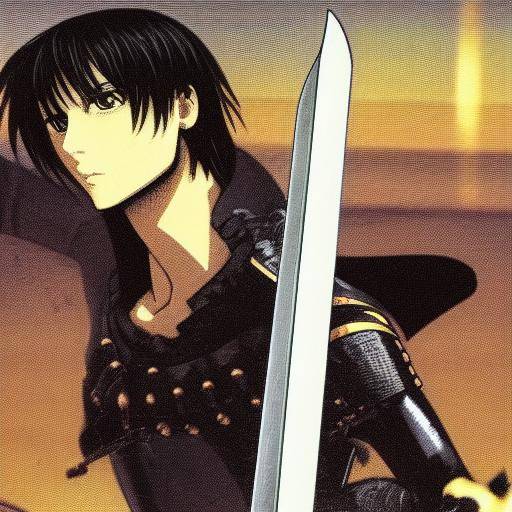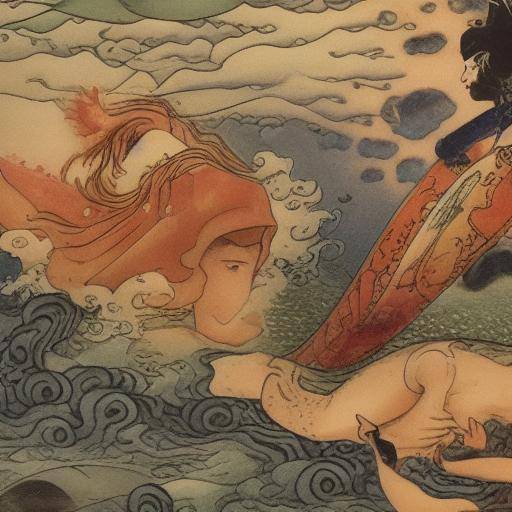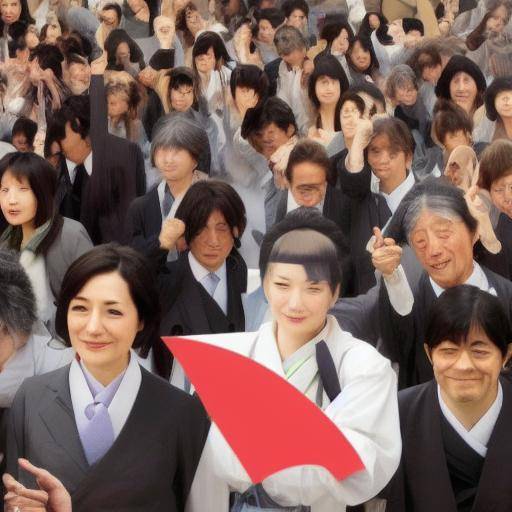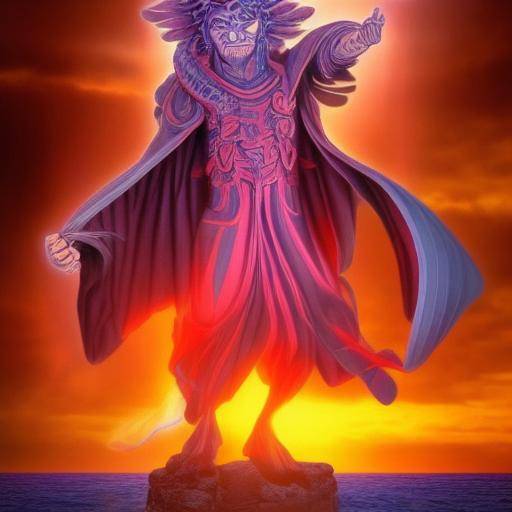
Japanese mythology is full of deities that represent forces of nature, incarnating elements such as wind, water and lightning. Among these figures, stands out Susanoo, the god of the storm, known for his adventures and his influence on Japanese mythology. In this article, we will explore the history, meaning and adventures of Susanoo, as well as her role as a storm god in Japanese mythology.
Introduction
Japanese mythology is rich in deities that personify different aspects of the universe, and Susanoo is one of the most intriguing and powerful figures within this rich pantheon. His legacy as a god of the storm makes him an imposing and mysterious figure, whose actions have left a profound mark on Japanese mythology. Throughout this article, we will explore in detail the story, features and adventures of Susanoo, as well as its role as a god of storm.
History and Background
Origins and Legends
Susanoo's story goes back to the early records of Japanese mythology, where his role as a storm god has placed him in a prominent place among the most powerful deities. According to ancient legends, Susanoo was known for his influence on natural phenomena, especially storms and violent winds. His role as the brother of Amaterasu, the goddess of the sun, and Tsukuyomi, the god of the moon, places him in a context of great importance within the Japanese pantheon.
Legends and Adventures
Susanoo's adventures have led him to face mythical and monstrous creatures, as well as to challenge other gods in transcendental combats. His courage and determination in these exploits have made him a legendary figure, whose prowes have been narrated throughout generations. These feats include their confrontation with the eight-headed serpent, Yamata no Orochi, and their interactions with other divine and mortal beings.
Analysis in Deep
Influence and Legacy
Susanoo's influence extends beyond his attributes as a storm god, as his legacy has left an indelible mark on Japanese mythology. His role as a defender of mortals and his participation in the creation of important artifacts and tools have made him a symbol of protection and strength. His legacy as a storm god has been adopted in different aspects of Japanese culture, influencing traditions, festivals and artistic expressions over the centuries.
Interpretations and Meanings
The multiple interpretations of Susanoo legends offer a diverse view of their character and influence. Some versions portray Susanoo as an impulsive and challenging god, whose actions often trigger conflicts and disasters. Other interpretations highlight his benevolent side and role as protector of mortals against adverse natural forces. These interpretations offer an enriching look at Susanoo's complex personality and role as a storm god.
Exhaustive examination
Parallel with Other Deities
By comparing Susanoo with other deities in Japanese mythology, such as Raijin, the thunder god, and Fujin, the wind god, are revealed parallels and interesting contrasts. While Raijin personifies the strength and ferocity of thunders, and Fujin represents the tempest and agitation of the winds, Susanoo amalgamates these qualities in her role as god of the storm. These comparisons allow us to better understand the place of Susanoo within the pantheon of Japanese deities and their relationship with other aspects of nature.
Relevance in the News
Susanoo's influence on contemporary culture is reflected in various manifestations, from artistic representations to references in literature, film and video games. His image as a god of the storm has been adapted and reinterpreted in the modern context, keeping his presence alive in the collective consciousness. This lasting relevance demonstrates Susanoo's lasting and impact as one of the most iconic figures in Japanese mythology.
Practical Tips and Recommendations
Celebrations and rituals
The figure of Susanoo is honored through festivals and rituals in different regions of Japan, where ceremonies are held to invoke their protection and seek their favor in times of climatic inclement. These traditional practices show the continued importance of Susanoo as a storm god in everyday life and popular beliefs.
Interpretation in Art
Japanese art has captured the essence of Susanoo over the centuries, presenting it in paintings, engravings and sculptures that reflect its role as a god of the storm and its encounters with supernatural creatures. Susanoo's artistic representation provides a unique window to her aesthetic and symbolic influence on Japanese culture, showing her impact on the development of art and creative imagination.
Perceptions of Experts and Future Trends
Visions and Predictions
Academicians and experts in Japanese mythology continue to explore the implications and meanings of Susanoo in contemporary culture, highlighting its relevance in the understanding of Japanese worldview and its connection to nature. The predictions about the future role of Susanoo in Japanese and global society reflect a continuing interest in its importance as a mythological and cultural figure.
Conclusions and FAQs
Conclusions
Susanoo, as a storm god, continues to fascinate through her legacy in Japanese mythology. His influence has transcended the borders of time, maintaining its relevance in modern culture as a symbol of strength, protection and might. Through her adventures and feats, Susanoo has left an unbeatable mark on Japanese mythology, ensuring her place as one of the most fascinating and venerated deities within the Japanese pantheon.
Frequently asked questions
1. What is the role of Susanoo as a storm god?
Susanoo is considered a god who controls the storms, winds and associated natural phenomena, representing both ferocity and protection against the forces of nature.
2. What are the main feats of Susanoo in Japanese mythology?
Among its most outstanding feats is its confrontation with the eight-headed serpent, Yamata no Orochi, and its role in creating important artifacts and tools.
3. How is Susanoo celebrated and honored in contemporary Japanese culture?
Through festivals, rituals and artistic representations, Susanoo is honored and remembered as a venerated god who protects the mortals from the forces of nature.
4. Is there any connection between Susanoo and other gods of Japanese mythology?
Susanoo is Amaterasu's brother, the sun goddess, and Tsukuyomi, the moon god, which establishes important connections within the pantheon of Japanese deities.
5. How has Susanoo influenced contemporary popular culture?
Susanoo's influence is reflected in artistic representations, literary references and adaptations in contemporary media, demonstrating its durability and cultural impact.
6. Why is it important to study the figure of Susanoo in Japanese mythology?
Susanoo's study provides a deeper understanding of Japanese cosmovision, its connection to nature, and its role as a source of meaning and symbolism in Japanese culture.
In short, Susanoo, the god of the storm in Japanese mythology, embodies a unique combination of power, duality and protection, leaving a lasting legacy that continues to captivate and admire generations that dive into Japan's rich mythological heritage. His influence as a mythical and cultural figure transcends time, keeping his place as one of the most iconic and venerated deities within the Japanese pantheon.
With this immersion in the fascinating figure of Susanoo, the god of the storm in Japanese mythology, we hope to have given you an enriching and revealing understanding of its impact, legacy and meaning within Japan's collective culture and imagination. May his presence continue to inspire admiration and astonishment, transcending the borders of mythology to resonate in collective consciousness throughout the centuries.

